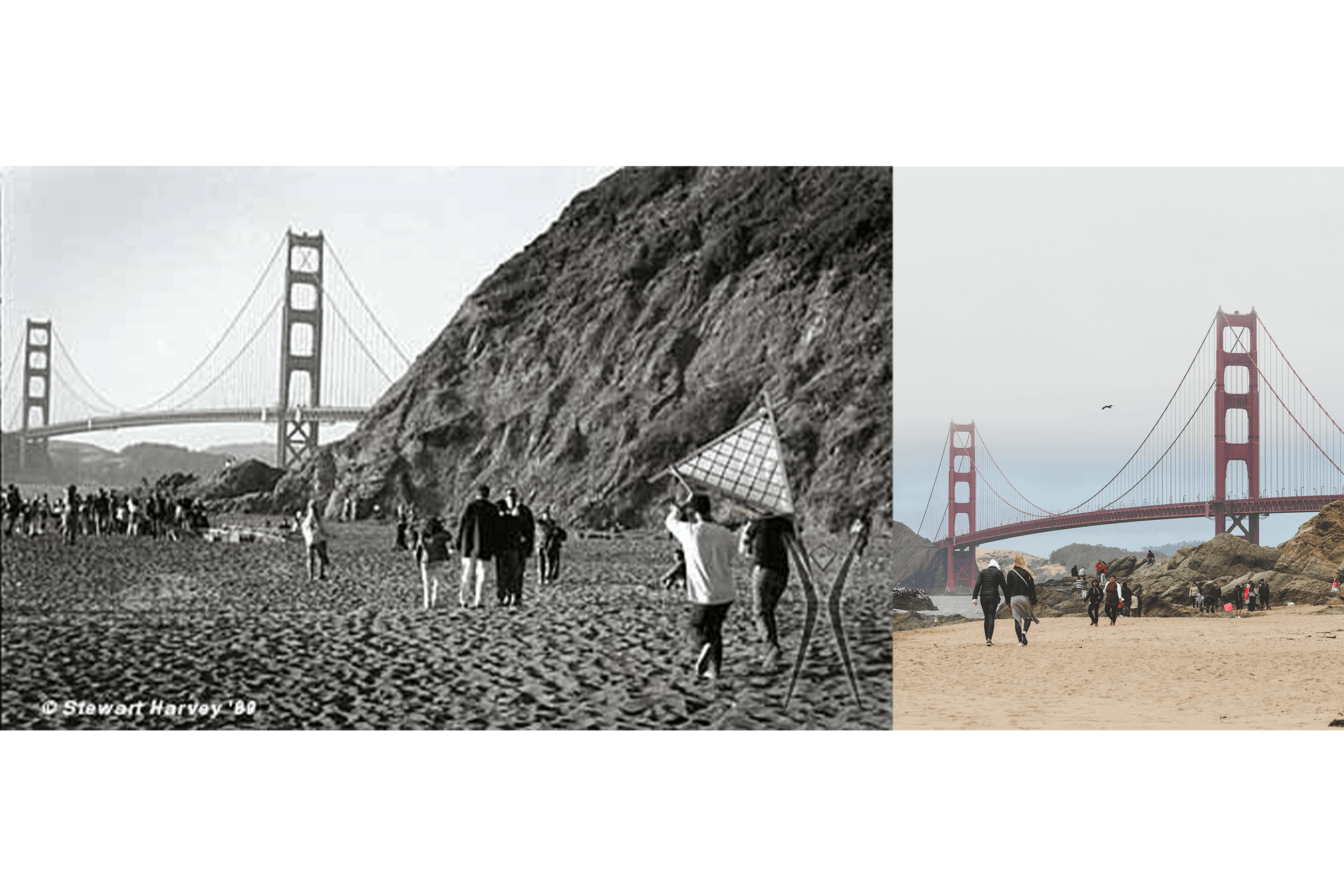Jul 11, 2016
Then + Now: Burning Man at Baker Beach
The cultural event can trace its roots back to the Presidio's Baker Beach in the 1980s.Did you know Burning Man can trace its roots to its origin at the Presidio’s Baker Beach? In 2016, the Cacophony Society’s Michael Mikel – who along with original “Burner” Larry Harvey, helped bring Burning Man to life – spoke at the Presidio Officers’ Club about “San Francisco’s Roots of Burning Man.” He was also interviewed for Presidio Stories. In honor of Burning Man taking place this week, take a trip down memory lane with Michael and see some incredible photos from the early years of the event.
History of Baker Beach Fires
Baker Beach has long been an eclectic place for gatherings. As early as the 1890s, when the Presidio was still a military post, people began having bonfires at Baker Beach. In 1933, a fire believed to be caused by a careless fisherman camping at the beach spread all the way up the cliffs to within 100 feet of the coastal gun batteries, covering a distance of a half a mile (it took 50 Presidio firemen, 100 coast artillerymen, and three SF engine companies to extinguish the fire). In 1997, Baker Beach became part of the national park system, and today beach fires are no longer permitted.
Origins of Burning Man
In June 1986, while the Presidio was still an active Army post, a new tradition started at the northern end of Baker Beach – Burning Man. Initially, the founders of Burning Man were drawn to Baker Beach because of the bevvy of driftwood found there. The northern portion is notoriously known as a “clothing optional” spot for sun bathing and one of the more isolated beaches in San Francisco. Thus it was the perfect place for a group of 20 friends to gather for a bonfire where Burning Man founder Larry Harvey set aflame the eight foot tall wooden structure he called “the Man.”
Though Larry was the first to burn a structure of a man, he wasn’t necessarily the first to start this effigy burning tradition at Baker Beach. Several years before burning a man was even a twinkle in Larry’s eye, Mary Grauberger, a friend of Larry’s girlfriend, held annual bonfires at the beach where she’d assemble driftwood statues to burn in honor of Summer Solstice.
The Birth of an Event
Picture this: it’s pre-tech boom San Francisco and the City is overflowing with artists, hippies, and free-thinkers. Into this comes the Cacophony Society, “a randomly gathered network of free spirits united in the pursuit of experiences beyond the pale of mainstream society,” according to Michael Mikel, one of the Cacophony Society’s founders.
Influenced by the Dadaists, Surrealists, and Situationists, the Cacophony Society was a proponent of the “free university.” They also had an extensive mailing list and each month they’d invite members to participate in fun and unusual activities – like exploring architecture, putting on plays, or dressing up and having adventures around San Francisco.
Larry Harvey was a member of the Cacophony Society, and in 1988 he invited Michael to attend his first effigy burning at the as yet-unnamed event at Baker Beach. The following year Larry asked Michael to help publicize the solstice gathering through the Cacophony Society’s mailing list, and thus the event became the newly minted “Burning Man” in their newsletter. Attendance shot up to 300.
“San Francisco was ripe for something like Burning Man,” Michael shared. The following year attendance grew to 350 before local law enforcement shut down the burning of “the Man” due to the group’s lack of a fire permit.
In 1990, Burning Man moved to Nevada, far away from the Presidio and the Golden Gate Bridge. And the event has certainly grown since – in 2015, 65,564 people watched a 60-foot structure of a man burn on the playa in the heat of Black Rock Desert.
Michael now lives in Reno so he’s closer to Black Rock Desert, but he comes to San Francisco every few months, and he’s looking forward to speaking at the Presidio Officers’ Club in August 2016. “The Presidio is such a beautiful place,” he says. “I came out to Crissy Field recently and gave friends a tour of the whole area. We had a barbecue.” When asked if he burned anything while there, he laughed, “No. Surprisingly, I managed to not burn the hot dogs.”
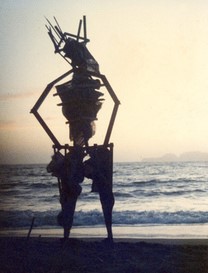
Then: 1986 — “The Man” during the first year at Baker Beach
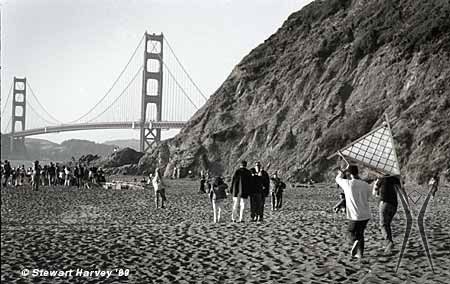
Then: 1989 — Bringing “the Man” to Baker Beach.
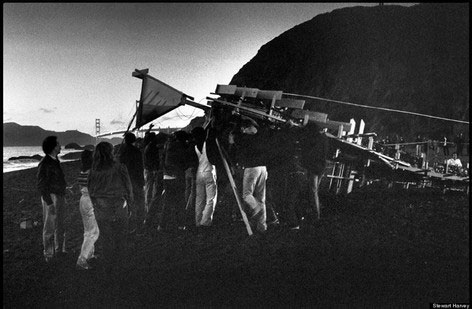
Then: 1989 — Raising “the Man” at Baker Beach
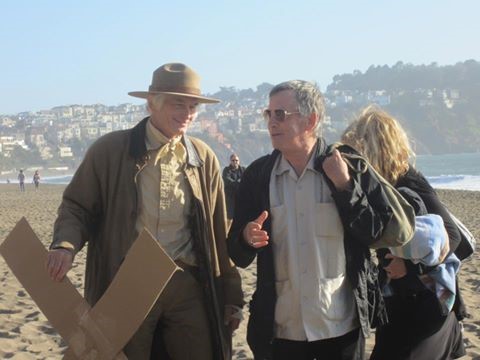
Then: June 2012 — Michael Mikel (left) and Larry Harvey(right), founders of Burning Man, at Baker Beach, Summer Solstice, June 20, 2012, for the 25th Anniversary of Burning Man.
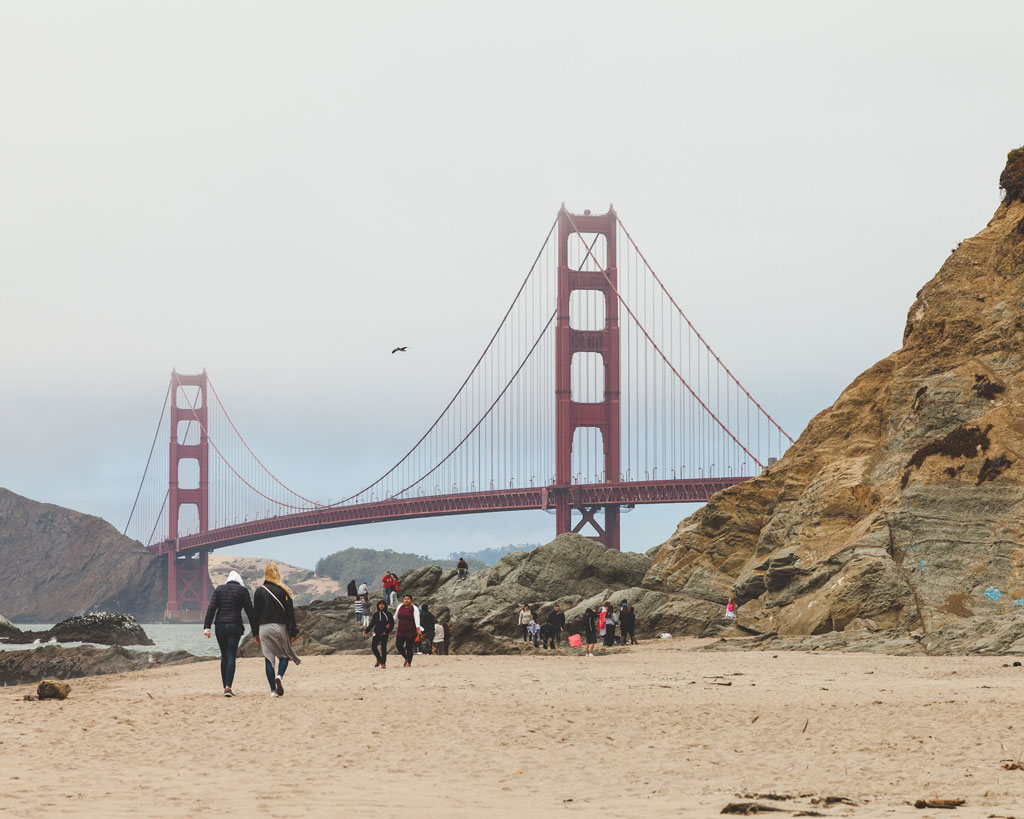
Now: Summer 2016 – Baker Beach is still a popular public beach, and one of the warmest sandy spots on San Francisco’s Pacific Coast. It’s an excellent place to sunbathe, whale watch, or have a picnic. Though bonfires are no longer allowed on the beach here, check out the National Park Service Beach Fire Regulations for information on beaches in the area where fires are permitted.
